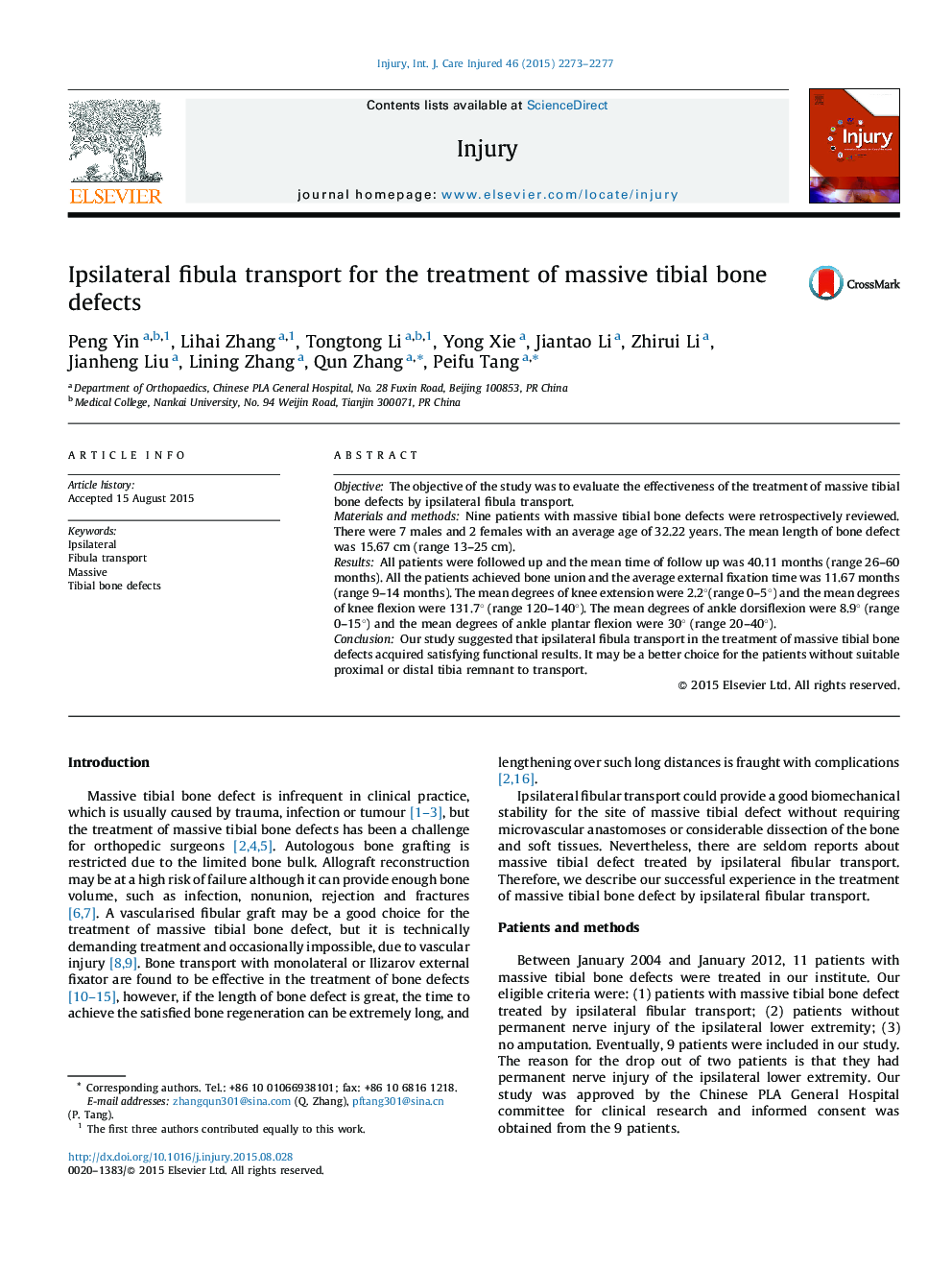| Article ID | Journal | Published Year | Pages | File Type |
|---|---|---|---|---|
| 3239228 | Injury | 2015 | 5 Pages |
ObjectiveThe objective of the study was to evaluate the effectiveness of the treatment of massive tibial bone defects by ipsilateral fibula transport.Materials and methodsNine patients with massive tibial bone defects were retrospectively reviewed. There were 7 males and 2 females with an average age of 32.22 years. The mean length of bone defect was 15.67 cm (range 13–25 cm).ResultsAll patients were followed up and the mean time of follow up was 40.11 months (range 26–60 months). All the patients achieved bone union and the average external fixation time was 11.67 months (range 9–14 months). The mean degrees of knee extension were 2.2°(range 0–5°) and the mean degrees of knee flexion were 131.7° (range 120–140°). The mean degrees of ankle dorsiflexion were 8.9° (range 0–15°) and the mean degrees of ankle plantar flexion were 30° (range 20–40°).ConclusionOur study suggested that ipsilateral fibula transport in the treatment of massive tibial bone defects acquired satisfying functional results. It may be a better choice for the patients without suitable proximal or distal tibia remnant to transport.
